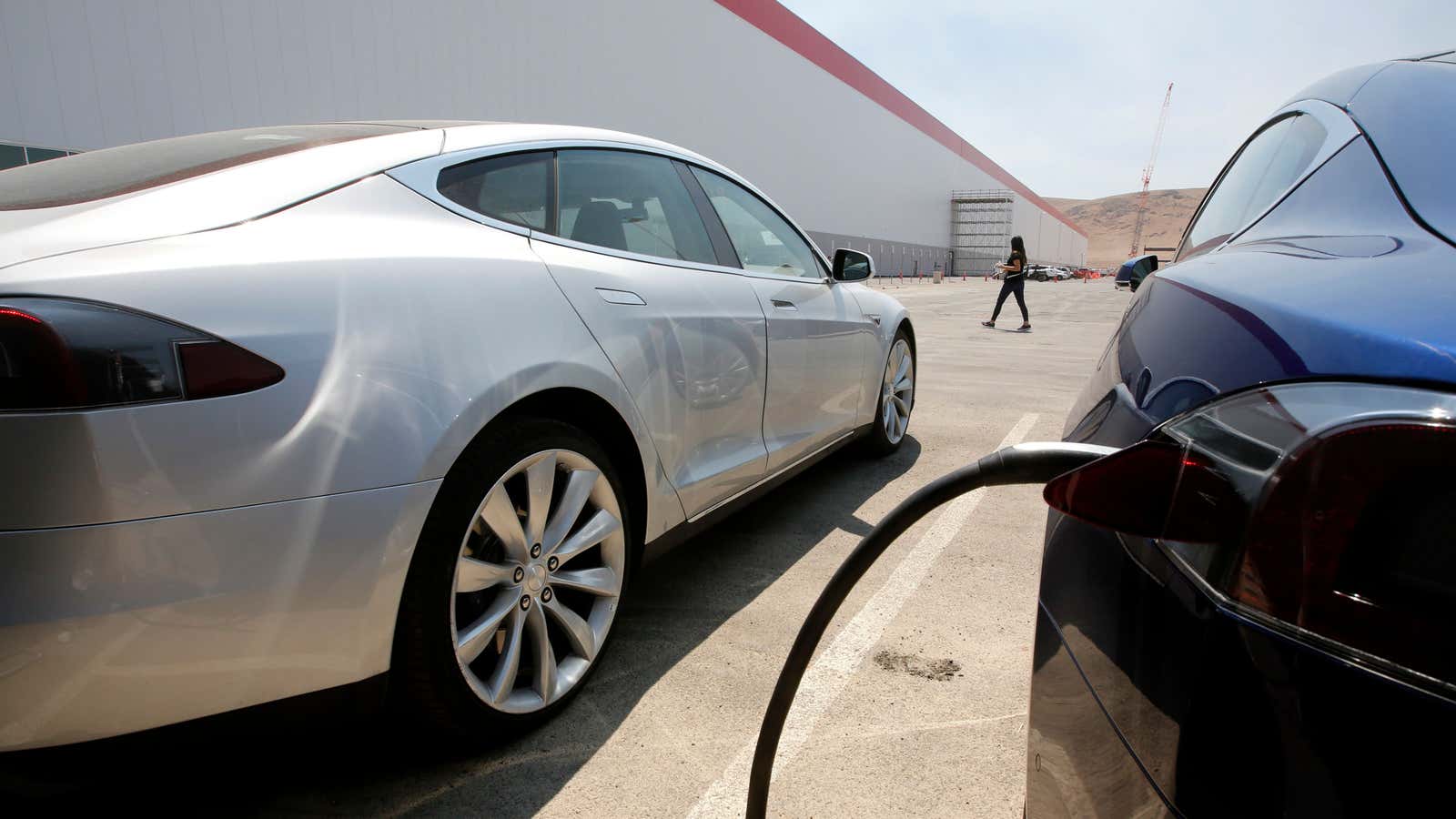Tesla CEO Elon Musk needs to make more cars. The company has fallen short of Model 3 production goals since it started making the mass-market car last summer, promising 5,000 cars per week by the end of 2017 but only delivering 2,425 a week over the last three months of the year.
In an effort to drastically ramp up production, Tesla employees are now tinkering with the core designs of the Model 3 car and the production process, detailed by a New York Times report (paywall), something that experts say is unprecedented. Executives at Tesla decided that the car didn’t need so many spot welds holding the underbody together, so engineers found 300 “unnecessary” welds and reprogrammed the welding robots cut them from the production process.
Robots have been a source of contention in the factory floor as well, many being replaced by manual labor or having their tasks modified to reduce the margin of error, according to the Times. Musk has admitted that the Tesla production line relied on too many robots.
Originally robots were meant to install seats into the car autonomously; now, robots place the seat into the car and a human tightens the bolts and installs electric components. Similarly, bolts holding the car’s rear brake in place needed to be switched out because the robots couldn’t accurately thread them through the intended hole. “It’s unusual to be doing that at this point in time when the car is already launched,” Ron Harbour, a manufacturing expert, told the Times. “Normally you’d make changes like that in the prototype stage.”
Musk seemed to confirm an earlier Reuters report that painting the cars is also holding up production. On a 3 am call with the Times, he said a sensor detecting when a car comes from the painting booth was malfunctioning, so someone has to manually override each errant error. The company has already raised eyebrows by building a giant tent next to its factory to create another assembly line.
Wall Street isn’t betting on Musk to make the goal, which is crucial for Tesla to achieve a profit. Goldman Sachs estimates just over 4,500 cars per week by the end of the financial quarter ending June 30, with others estimating around total 22,000 for the quarter.
